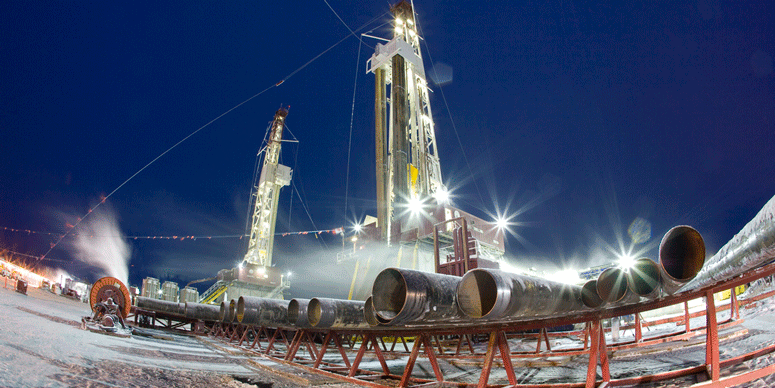Lower drilling costs, more knowledge and continued government support are pushing China closer to its goal of developing more unconventional resources.
According to a report released this week by the U.S. Energy Information Administration (EIA), the cost to drill a horizontal shale gas well in China’s Sichuan Basin has dropped by 23% since 2013. The EIA said the cost is now between $11.2 million and $12.9 million. The drop, coupled with knowledge gained from joint ventures in U.S. shale plays, could pay off in tapping some of China’s estimated 1,115 trillion cubic feet (Tcf) of technically recoverable shale gas resources.
However, “The part of these resources that becomes economically recoverable will depend on the market price of natural gas from foreign sources, including both pipeline gas and liquefied natural gas, as well as the capital and operating costs and productivity of shale gas production within China,” the EIA said.
China’s continued push to develop its unconventional resources comes as slumping commodity prices have caused some companies to lay down rigs and forgo completions in the U.S. while others have pulled away from emerging shale plays in other parts of the world.
Energy consumption is expected to grow in China. But by how much remains to be seen.
The BP Energy Outlook released in February 2015 forecast energy consumption in China would grow by 60% by 2035, while energy production would rise by 47%. Most of the output growth would come in natural gas, which could see a 200% increase within the next 20 years─enough to offset expected oil declines but not meet overall consumption.
“We project that by 2035 China becomes the world’s largest energy importer, overtaking Europe, as import dependence rises from 15% to 23%,” BP said.
But in recent months gas demand in the world’s most populous country has been growing slower as its economic growth slows.
Wang Zhen, deputy director of China National Petroleum Corp.’s (CNPC) policy research office, said in a Reuters report that natural gas demand could reach at least 330 billion cubic meters (Bcm) by 2020. “The government is much more optimistic with a target of 400 billion,” he said.
Natural gas demand was 178.6 Bcm in 2014, according to China’s National Development and Reform Commission. The commission estimated consumption would rise to 200 Bcm this year.
Despite the slowdown energy demand is still growing, and companies such as CNPC subsidiary PetroChina Co. Ltd. and Sinopec are working to develop the country’s shale gas to meet energy needs. Most of the work has been centered in the Sichuan Basin’s Longmaxi Formation, according to the EIA, which estimates the basin to hold 287 Tcf of technically recoverable gas.
PetroChina and Sinopec are aiming to produce about 600 MMcf/d of shale gas by year-end 2015, and the two companies are on track toward reaching the goal, the EIA said, citing China’s Ministry of Land and Resources.
Of the 125 shale wells drilled by CNPC, 74 have been brought into production.
In September, CNPC said it added more than 160 Bcm of shale gas reserves in the Sichuan Basin. The newly proved areas span nearly 208 sq km in the Wei-202, Ning-201 and YS108 well blocks. As of Aug. 27, 47 wells were producing a total of 3.62 million cubic meters per day in the new areas.
“This is the first time for CNPC to submit proven shale gas reserves to the Ministry of Land and Resources,” CNPC said in a statement. “It marks a new breakthrough in China’s unconventional gas exploration and development, and is significant to promoting the rapid development of China’s gas industry and ensuring national energy security.”
Sinopec is concentrating its work in the Fuling shale gas field, where the EIA said the company has a commercial-scale effort underway. The company completed 75 test wells in the field by year-end 2014 and had plans to drill 253 more wells.
“Although still a small fraction of China’s overall production, estimated at 13.0 Bcf/d in 2014, increasing shale gas output could eventually help to meet growing demand for natural gas in China and to limit growth in the country’s natural gas imports,” the EIA said.
China has been focusing more on shale gas after encountering challenges in developing coalbed methane resources. Although the country has more than 20,000 wells that produce a combined 360 MMcf/d of coalbed methane, mainly in Shanxi Province’s Ordos and Qinshui basins, low permeability and under-saturation in these basins have hindered productivity, according to the EIA report.

 石油圈
石油圈


